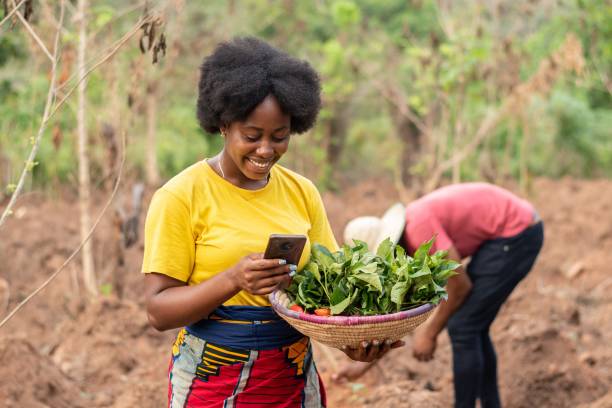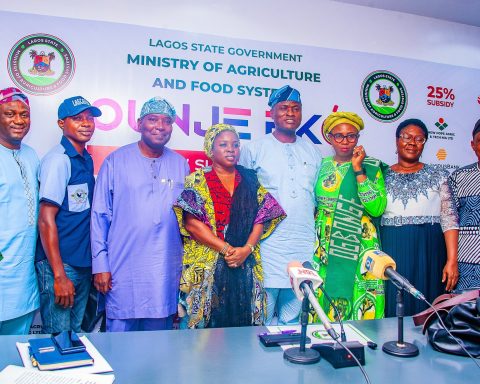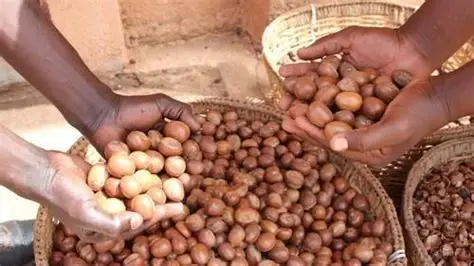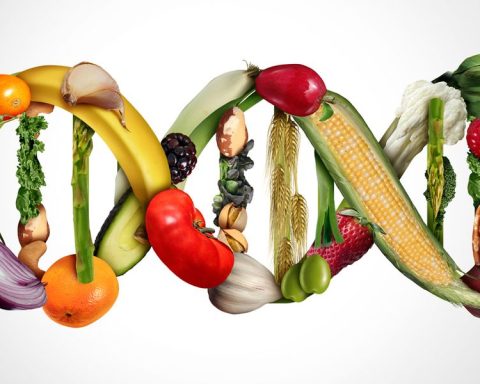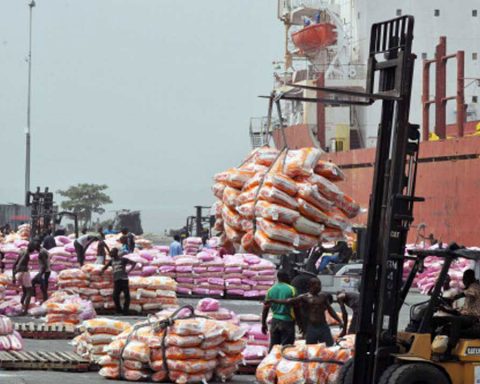In the second quarter of 2023, the agricultural sector generated about 21 percent of Nigeria’s Gross Domestic Product. The largest contribution was from crop production, which covered nearly 19 percent of the GDP.
Despite the contribution to the economy, Nigeria’s agricultural sector faces many challenges which impact on its productivity.
Join our WhatsApp ChannelThese include; poor land tenure system, low level of irrigation farming, climate change and land degradation. Others are low technology, high production cost and poor distribution of inputs, limited financing, high post-harvest losses and poor access to markets.
Prime Business Africa presents interesting statistics from various sources on the state of the sector in 2023.
1. Palm Oil Production In Nigeria
Nigerian production volume of palm oil amounted to 1.4 million metric tons on the year 2023, according to information sourced from Statista.com.
In 2018/2019, the palm oil usage amounted to over 71 million metric tons worldwide. That figure is projected to increase to approximately 76 million metric tons by the end of 2023.
2. Cocoa Beans Production In Nigeria
Statista.com further informed that Nigeria is expected to produce about 280 thousand tons before the end of the year 2023.
Put in context, approximately 238 thousand tons of cocoa beans was produced by the country in 2012/2013.
Ondo state is the largest producer of cocoa in Nigeria and the state produces about 80,000 tons of cocoa annually. Nigeria produces about 300,000 tons of cocoa annually. Other states that produce cocoa in large quantity are Ogun, Delta, Edo, Akwa Ibom, Cross Rivers, Osun, Oyo and Ekiti etc.
Nigeria’s total annual output is about 340,163 tones. The ‘African giant’ is the fourth largest cocoa producer on the continent while Cote d’Ivorie the highest producer of the resource turn over 2,200,000 tonne annually.
3. Production inputs of Sorghum In Nigeria
Nigeria’s bulk of sorghum production is derived from the Northern Guinea and Sudan/Sahel ecologies of Northern Nigeria. Sorghum is regarded as a traditional food crop in this agro-ecologies.
Production inputs such as seed, inorganic fertilisers and crop protection chemicals are imperative for increasing agricultural productivity.
The majority of the farmers (74.4%) as pointed out by a report on tandfonline use low yielding local landraces that have been developed through mass selection and saved from the previous harvest.
Nigeria’s sorghum production in 2023/24 is expected to hit 7 million metric tons, the same as the previous year. Area harvested in 2023/24 is forecast at 5.8 million hectares, about a 2 percent increase from the preceding year.
Sorghum cultivation is predominant in Northern Nigeria, where it is a traditional crop supporting the dietary needs of rural farmers for time immemorial. Sorghum provides food, fodder, raw material, and a source of cash income to rural farmers.
4. Harvest Sales of Cassava In Nigeria
Farmers of Cassava are groaning with the harvest sales having dropped significantly in the year 2023 when juxtaposed with the huge gains made in the past two years.
Due to the disappointment encountered by the farmers, there has been some reduction in the number of those going into the business this year.
This invariably cut short cultivation and those looking to advantage of the supply and demand gap of the crop in 2024
Due to this disappointment experienced thus far, the number of people who would be interested in cultivating the crop in 2023 drastically reduced. This portends a difficult 2024 as the supply and demand chain may be adversely affected.
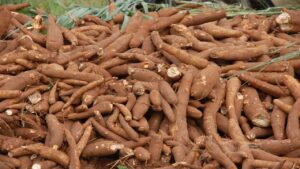
5. Cashew Production In Nigeria
Cashew production is big business in Nigeria and it is one of the exportable products approved by the Nigerian government.
Nigeria ranks as one of the big Cashew producers in Africa with an estimated 300,000 metric tons of raw cashew nuts (RCN) every year.
Nigeria is a major player in the cashew industry, ranking among top countries globally for sourcing cashew.
According to statistics, Nigeria produces about 300,000 metric tons of raw cashew nuts (RCN) every year making her the second largest producer of this nut in Africa after Ivory Coast with an estimated annual production of over 800,000 metric tonnes.
6. Crop Production In Nigeria
According to the the Nigerian Gross Domestic Product Report for Q2, 2023, released by the National Bureau of Statistics (NBS), crop production, trade, and information and communication services contributed over 50 per cent to increase Nigeria’s gross domestic product (GDP) to 2.51 per cent in the second quarter of 2023.
Crop Production remained the major driver of the sector. This is evident as it accounts for 86.85% of the overall nominal value of the sector in the first quarter of 2023. Quarter-on-quarter growth stood at -28.83% in the first quarter of 2023. Agriculture contributed 19.63% to nominal GDP in the first quarter of 2023.
The information was provided by Nigeriastat.gov.ng
Crop production, trade and ICT had a combined contribution of 53.52 per cent to the real GDP in the second quarter.
The report indicates the GDP grew by 0.20 per cent, higher than 2.31 per cent recorded in the first quarter of 2023. This translates to N52.10 trillion in nominal GDP and N17.72 trillion in Real GDP.
Reliable data-based website, Statistica.com indicates that the second quarter of 2023, Nigeria’s crop production grew by 1.5 percent compared to the same period of the previous year.
7. Rice Production in Nigeria
Despite the oil boom, agriculture remains the base of the economy and Rice is a constant commodity which the world can not do without it.
Typically, rice is the main dish in Nigeria and the average Nigerian eats rice 5 out of 7days a week.
In the 2022/2023 production season, 3,500 Hectares Area was covered in rice production in Nigeria while the Production saw 5,355 tons of rice achieved.
However a slightly lower number is projected in the 2023/2024 planting season with the current subsidy removal in Nigeria’s oil industry adversely affecting the other sectors of the economy.
8. Fish Production In Nigeria
Fish production is a veritable source of huge income in Nigeria.
The metric tons in Nigeria of fish production, according to the World Bank collection of development indicators complied from officially recognized sources in Nigeria highlighted the actual values, historical data, forecasts and projections were published in October 2023.
Fisheries production measures the volume of aquatic species caught by a country for all commercial, industrial, recreational and subsistence purposes.
9. Livestock Production in Nigeria
In the second quarter of 2023, the contribution of livestock production to Nigeria’s GDP experienced an increase of 2.3 percent compared to the same period of the previous year as statisticia.com stated.
Agriculture contributes to a significant part of the country’s GDP and livestock production is hugely important as we depend on livestock for food purposes.
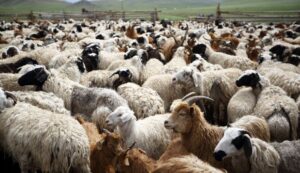
10. Groundnut Production in Nigeria
Groundnut production in Nigeria has suffered major setbacks from the groundnut rosette epidemics and foliar diseases, aflatoxin contamination and lack of sufficient and consistent supply of seed of improved varieties.
A study was carried out to analyse the profitability of groundnut production in Northern Part of Taraba State.
The objectives of the study, as espoused by researchgate.net were to: describe the socioeconomic characteristics of groundnut farmers, estimate the cost and returns associated with groundnut production and identify the constraints faced by groundnut farmers in the study area.
Data were collected with the aid of structured questionnaire administered to 150 randomly selected farmers in the study area.
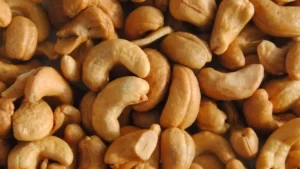
11. Maize Production in Nigeria
Maize production has exponentially grown in Nigeria over the years and it remains a long time supply of diary products for millions of homes in Nigeria and all over the world.
Agriculture contributes to a significant part of the country’s GDP and the production of maize on this regard has been a huge part of the country’s agro ecosystem.
Maize production in Nigeria amounted to 12.75 million metric tons in 2021. This slightly increased from the previous year, when the volume reached 12.4 million metric tons, the highest within the observed period. The quantity of maize produced in the country has generally increased since 2010.
12. Palm Oil Production in Nigeria
In 2021/2022, palm oil consumption in Nigeria amounted to about 1.72 million metric tons.
Fas.usda.gov report report carried out in Lagos, the centre of excellence and Nigeria’s economic hub forecasts that palm oil consumption in 2023/2024 will reach 1.9 metric tonnes.
Akwa Ibom and Edo states are arguably two of Nigeria’s key oil palm-producing states.
Weather evidently plays a big part in how successful or otherwise oil production in the country would be.
The effect of weather parameters on oil palm production reveals that the distribution of rainfall affects the growth and development of palm trees and, in turn, affects palm oil production.
13. Rubber production
Findings from relevant and informed sources hint that natural rubber and gum production recorded a drastic downturn of late.
Rubber has always been a good export commodity in Nigeria and over the years had become one of the few highest grossing raw materials in Nigeria.
When the lockdown experienced by the Covid 19 pandemic eased off and countries gradually began to open up their land borders for businesses, it was greeted with wild celebrations as it marked the beginning of new opportunities.
14. Cattle Production
Cattle Production is a money spinning business as it is the number one source of diary products in most countries of the world.
According to a resource book secured by Prime Business Africa on exports business in Nigeria: ‘Export Promotion In Nigeria: Law, Policy and Practices’, laws guiding the pest control of produce was enacted to ensure good safety and quality assurance of produce.
“In a bid to regulate and ensure the export of qualitative products out of Nigeria, the Federal Government enacted the Pest Control of Produce (Special Powers) Act,” a section of the book said in parts.
In the second quarter of 2023, the contribution of livestock production to Nigeria’s GDP which Cattle Production fall on, experienced an increase of 2.3 percent compared to the same period of the previous year as stated by statistical website, Statista.com.
15. Agricultural Exports in Nigeria
Exports of agricultural goods marginally increased by 0.44 percent over the value recorded in Q1 2023 (₦279.64 billion) and showed a sharp increase of 98.12 percent when compared to the value recorded in Q2, 2022 (₦141.77 billion) respectively.
Cut flowers and flower buds, Soya bean seeds, other Cut Flowers & Flower Buds (Ornamental Purposes), Flours and meals of soya beans, soya beans, cocoa beans, cashew nuts, In-shell cashew nuts, sesame seeds, superior-quality cocoa beans made the cut for the most exportable products in the first quarter of the year 2023.
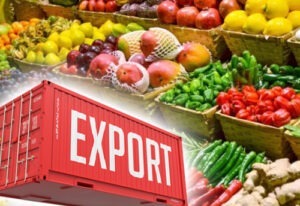
16. Agricultural Imports in Nigeria
The major agriculture goods imported in Q2, 2023 included ‘Durum wheat (not in seeds)’ from Poland with ₦44.80 billion and Lithuania with ₦41.63billion.
This was followed by ‘Fractions of Palm oil and its fractions, not fit for human consumption from Malaysia valued at ₦19.60 billion.
The top imports of Nigeria as published by oec.world are Refined Petroleum ($11.3B), Wheat ($3.32B), Cars ($2.42B), Packaged Medicaments ($972M), and Broadcasting Equipment ($934M), importing mostly from China ($21.9B), India ($4.75B), Netherlands ($4.58B), United States ($4.42B), and Belgium ($2.34B).
17. Urban Farming
Self reliance on Agriculture in Nigeria has been clouded by the propensity on importation of processed foods into the country.
The apathy on this could do with reports that poisoned foods or those laced with poor substances have infiltrated the market.
According to a projection by the United Nations, Nigeria’s population will reach about 401.31 million by 2050; therefore, there is a need to be some steps ahead in the need for food security.
18. Agriculture and Rural Development
Three-quarters of the world’s poor live in rural areas and most earn their living from farming, according to a, report by the World Bank.
Enhancing agricultural productivity is thus essential to achieving poverty reduction. Productivity growth in agriculture is also the driving force behind structural transformation.
Elevated food prices in the late 2000s provoked a rash of government interventions in agricultural markets across the globe, often in the name of protecting the poor.
However, evidence from India shows that unskilled wages rose faster in rural districts growing more of those crops with large price run-ups over the 2004-09 period, thus benefitting rural households.
19. Government Support Programs
There are several government interventions through its vadoyos agencies to support farmers through grants loans, policies etc that help boost the sector and Nigeria’s economy in general.
For example, The National Institute of Food and Agriculture is inviting applications to increase the knowledge of agricultural science and improve the nutritional health of children.
The deadline is billed for 7 December 2023.
20. Farming Subsidies
Subsidies are direct or indirect payments made by the government to businesses or individuals. Direct subsidies involve cash payments from the government to the recipient. With indirect subsidies, on the other hand, industries or households enjoy certain economic benefits from government policies such as tax breaks.
Subsidies are generally implemented to promote consumption and production. For instance, if the government makes direct payments to rice farmers, this could increase rice production by reducing the production costs accruing to the farmers. This is an example of an agricultural subsidy.
The key subsidies in Nigeria include exchange rate, agricultural and fuel (Premium Motor Spirit or PMS). Nigeria has been subsidising its exchange rate by allowing multiple exchange rate windows.
21. Agricultural Workforce and Employment
Around one-quarter of the world’s labor force work in agriculture. In many low-to-middle-income countries, the majority work in farming and rely on it as their primary source of income.
This was stated by Ourworldindata.org.
A few centuries ago, this was the reality in rich countries the report stressed.
As countries get richer, the share of the population working in agriculture tends to decline as people move towards employment in industry and services.
Even among farmers, there are very large differences in incomes and productivity levels. The value added per worker can vary as much as ten-fold between countries.
22. Labor Trends in Agriculture
Between February and April 2020, as lockdowns, social distancing measures, and fears of COVID-19 spread, economic activity and employment fell sharply.
This adversely affected workers in the Agricultural sector.
However, with the recent subsidy by the Nigerian government, Nigerians could take a recourse to some of the old school ways of life.
Example of such is the use of local cooking tools in exchange for gas. This portends that Labour is necessary as the economy hits a bad patch.
23. Food Security
Food insecurity is a situation that bothers on the general level of (in) security in a country.
In Nigeria, the different parts of the country have experienced terrible security infringements and that has emerged as a big threat to food security.
As espoused by reliefweb. int: “The food security situation has over the years been impacted especially by violent conflicts, including the insurgency in the North East; armed banditry in the Northwest; perennial farmer – herder conflicts in the North Central, South West, and increasingly across the country; and separatist agitation in the South East among others.”
Over 25 million Nigerians are reportedly food insecure and they were mostly hit between June and August 2023. This was higher than statistics provided for the year 2022 which stood at 17 million.
24. Droughts and Climate Change Impact
The World Bank opine that by the late 21st century the land area and population facing extreme droughts could more than double globally. While projections of future rainfall are highly uncertain, climate change models are unanimous that rainfall will become more erratic and extreme with rising temperatures.
Water deficits are fast becoming the new normal.
Over the last half century, extreme “dry rainfall shocks” – i.e., below-average rainfall — have increased 233% in certain regions. A dry shock that is one standard deviation from the norm is normally a rare event that could be expected to include 15 of the driest episodes in a century.
This is often the case on the northern part of Nigeria and parts of the Niger Delta region of the country where mining of natural resources have led to land deforestation.
25. Nigeria Land Use and Deforestation statistics
There were 2,496 deforestation alerts reported in Nigeria between 3rd of October 2023 and 10th of October 2023, covering a total of 31 hactres of which 0.76% of land mass were affected.
The statistics above was supplied by Global Forest Watch.
Deforestation plays a negative impact on the growth of the Agricultural sector in Nigeria.
Public enlightenment campaign is needed to re-educate Nigerians on why they should be more conservative on the subject.
Land use act has also impacted on Agriculture as warring communities and/or government are involved in one dispute or another over lands.
26. Crop Prices in Nigeria
Selected Food Price Watch for May 2023 shows that the average price of 1kg of Beef boneless stood at N2,520.52 in May 2023.
This indicates a 24.19% rise in price in the year 2023 as compared with the previous year.
In the second quarter of 2023, Nigeria’s crop production grew by 1.5 percent compared to the same period of the previous year.
27. Statistics on Commodity Market Trends in Nigeria
The nominal value in the Commodities market is projected to reach US$402.90bn in 2023. It is expected to show an annual growth rate (CAGR 2023-2028) of 2.35% resulting in a projected total amount of US$452.50bn by 2028.
The average price per contract in the Commodities market amounts to US$0.02 in 2023.
From a global comparison perspective it is shown that the highest nominal value is reached in the United States (US$46,220.00bn in 2023).
In the Commodities market, the number of contracts is expected to amount to 20,850.00k by 2028.
28. Agricultural institutions In Nigeria
The various universities offering agriculture are many, but there are quite few universities where one can study agriculture in Nigeria.
The Institute for Agricultural Research (IAR) is poised to serve as centre of excellence for sustainable, affordable, efficient and easily adoptable technologies to enhance farm productivity in the country.
The place of institutes that educate the citizens on Agriculture cannot be over emphasised.
Former President Muhammad Buhari in October 2021 signed an agric council bill and further approved two new tertiary institutions, including the Agricultural Research Council of Nigeria.
29. Research and Development In Agriculture
Agricultural development is one of the most powerful tools to end extreme poverty, boost shared prosperity, and feed a projected 10 billion people by 2050, according to the World Bank.
Agricultural R&D is a crucial determinant of agricultural productivity and production and therefore food prices and poverty, a research by Science Direct stated.
Research is germain in the process of developing a framework for improving the quality of agriculture and it supports the sustainable transition of the sector.
30. Agricultural Challenges and Solutions
The strong seasonality of agriculture in Nigeria is governed by the timing of rainfall with production surges in the third quarter each year.
As revealed by fao.org, over 70 percent of Nigerians engage in the agriculture sector mainly at a subsistence level.
Despite the contribution to the economy, Nigeria’s agricultural sector faces many challenges which impact on its productivity. These include; poor land tenure system, low level of irrigation farming, climate change and land degradation.
Others are low technology, high production cost and poor distribution of inputs, limited financing, high post-harvest losses and poor access to markets.
These challenges have stifled agricultural productivity affecting the sector’s contribution to the country’s GDP as well as increased food imports due population rise hence declining levels of food sufficiency. For instance, between 2016 and 2019.
Nigeria’s cumulative agricultural imports stood at N3.35 trillion, four times higher than the agricultural export of N803 billion within the same period.
31. Environmental and Sustainability Statistics
The Sustainable Development Report 2023 tracks the performance of all 193 UN Member States on the 17 Sustainable Development Goals.
In April 2023, Google released data highlighting the top sustainability-related trends in Nigeria, which showcases Nigerians’ growing interest in going back to agriculture and taking the bull by the horn to ensure continued food availability in the face of environmental issues.
32. Agricultural Technology and Innovation
Regrettably, Nigeria had declined to 93 out 117 qualifying countries on the 2019 Global Hunger Index.
The Oxfam 2019 report also portends a bleak future for Nigeria as the country ranks among the most affected in terms of hunger situations in a country that subsistence farming has not significantly decreased in the rural areas.
Low scale technology use, ineffective credit model, and lack of competitiveness in the agricultural sector among others have hampered the country’s quest to fast-track economic diversification through the sector.
Experts in the agricultural sector say that innovation and improved technology which is vital in boosting farmers’ productivity and attain food sufficiency are lacking in most farms across the country.
33. Adoption of Modern Farming Techniques
By embracing innovative technologies, farmers can increase their productivity, enhance food security, and contribute to rural development.
The adoption of modern farming techniques to enhance yield and productivity in the country will go a long way in advancing the economy which Agriculture plays an important role in.
They need what some experts would refer to as ‘Smart farming’ which literally means managing farms using modern ICT to increase the quantity and quality of products while optimising the human labour.
Another formidable obstacle to the modernisation of Nigerian agriculture is the slow adoption of technology by small-scale farmers, who are mostly in the rural areas.
34. Use of Technology In Agriculture
Agricultural technology is an important aspect of modern farming practices in Nigeria, as it helps to improve crop yields, reduce production.
Experts in the agricultural sector have unanimously stated that innovation and improved technology are vital in boosting farmers’ productivity and attain food security.
The result and findings of the study: ‘Technological Transformation in the Agricultural Sector in Nigeria: An Antitode To Economic Recesdion’ shows that, agreeably there is a likelihood of a technological transformed agricultural sector in to increase domestic productivity.
The research understands the nature of the challenges and highlights the possibility of implementing PF technology to Nigerian Agriculture.
35. Rural and Urban Agriculture In Nigeria
The production of goods under urban agriculture goes beyond private goods, such as food produced for market or own use.
City farms/Urban farms are agricultural plots in urban areas, that have people working with animals and plants to produce food. They are usually community-run, sometimes in partnership with the government who will provide funds for projects execution while the community provides human manpower.
In Nigeria, agriculture was primarily a rural based activity. But, because of the increasing demand for food and jobs for many urban dwellers, it became diversified
36. Sustainable Farming Practices
Arable farmers in Lagos, Nigeria do use sustainable agricultural practices which are agro-forestry, biological pest control measures, composing, crop rotation, erosion prevention, green manure application, intercropping, mulching and water harvesting.
Agriculture and, more recently, sustainable agriculture in Nigeria is an industry that employs most of the country’s population.
Stringent measures are employed to ensure that farming practices are not overly affected by the government bottlenecks.
These approaches include; alternate land use systems, conservation agriculture, regenerative agriculture, organic farming, precision farming, etc.
37. Goat Production In Nigeria
In value terms, goat meat production skyrocketed to $X in 2022 estimated in export price. Overall, production has posted a mild expansion according to reports on index ox.io.
The market value had increased at an average annual rate of +1.8% from 2012 to 2022; the trend pattern remained consistent, with only minor fluctuations being observed throughout the analyzed period.
Despite the harsh economic climate, those involved in goat production are making ‘a kill’ as the food industry would always require goats for meats.
38. Sheep Production In Nigeria
Sheep production in Nigeria has significantly improved with the number increasing year-on-year.
This is because of the need to have alternative sources of meat supplies since the goat and chicken production which had been the country’s mainstay have become expensive .
Sheep is relatively cheaper to afford and is not considered as the country’s number one staple on terms of beef consumption.
39. Poultry Production In Nigeria
The Nigerian poultry market expanded slightly to $X in 2022, increasing by X% against the previous year. Overall, consumption recorded a deep reduction from 2013 to 2022 due to economic conditions.
People are currently finding beef alternatives for consumption or are restricted to buying in little bits especially with the biting effects of the petroleum subsidy that has seen the price of food items skyrocket.
Poultry production is also affected by adverse weather conditions with the rains part of reasons why high mortality is recorded by most readers of the stock.
40. Crop-Specific Statistics
The Federal Government can support agricultural production by providing quality seeds and supporting the cultivation of crops nationwide.
In the second quarter of 2023, Nigeria’s crop production grew by 1.5 percent compared to the same period of the previous year.
This could be in line with the government’s desire to see locally made products flourish.
Nigeria has 70.8 million hectares of agriculture land area with maize, cassava, guinea corn, yam beans, millet and rice being the major crops.
41. Market and Price Statistics
In the second quarter of 2023, the agricultural sector generated about 21 percent of Nigeria’s Gross Domestic Product. The largest contribution was from crop production, which covered nearly 19 percent of the GDP.
According to the National Bureau of Statistics, the agricultural sector in the second quarter of 2023 grew by 1.50% (year-on-year) in real terms, an increase of 0.30% points from the corresponding period.
It is a key activity for Nigeria’s economy after oil. Nevertheless, agricultural activities provide a livelihood for many Nigerians, whereas the wealth generated by oil reaches a restricted share of people.
Izuchukwu Okosi is a Nigerian sports and entertainment journalist with two decades of experience in the media industry having begun his media journey in 2002 as an intern at Mundial Sports International (MSI) and Africa Independent Television (AIT), owners of Daar Communications Plc.


